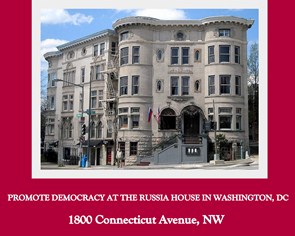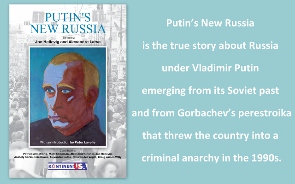
 In the exclusive interview with the Voice of Russia Yuri Solomonov, the designer of the legendary Topoland Bulava ballistic missiles, Director of the Moscow Institute of Thermal Technology, and Senior Member of the Russian Academy of Sciences, comments on such contradictory and sensitive issues as the Ballistic Missile Defenses in Europe, Russia’s concerns, a security system for one and all, the US interests in Europe and the creation of mechanisms of confidence.
In the exclusive interview with the Voice of Russia Yuri Solomonov, the designer of the legendary Topoland Bulava ballistic missiles, Director of the Moscow Institute of Thermal Technology, and Senior Member of the Russian Academy of Sciences, comments on such contradictory and sensitive issues as the Ballistic Missile Defenses in Europe, Russia’s concerns, a security system for one and all, the US interests in Europe and the creation of mechanisms of confidence.Read more: http://english.ruvr.ru/2013_06_06/US-ballistic-missile-shield-for-Europe-between-propaganda-and-real-threats-2840/
The Ballistic Missile Defenses in Europe is a component of a multifaceted problem of ensuring European security. Whenever we take up the missile defenses for Europe, we invariably imply whatever is related to the prominent major US initiatives to deploy stationary anti-missile systems in Europe to protect the area from outside impact. According to numerous western politicians and military officers, they basically mean protection against Iranian missiles.
It is obvious that the problems we are facing today are rooted in the past. A standoff from the perspective of missile defenses is obviously aimed against the nuclear missiles of a potential enemy, whoever one may mean by that.
The first moves and the pooling of efforts by the United States and its allies after they had reached strategic parity with the Warsaw Treaty in the late 1970s were subsequently transformed into an absolutely ungrounded decision to deploy the Pershing missile systems in Europe in the numbers that by far exceeded Europe’s, and the Europeans’, defence needs, as well as their military and economic potential.
Europe had already had by then a significant deterrence capability. Given the specifics of relations between the West and the East, which came to be known as the Cold War, it is clear that those deterred were the Soviet Union and its allies.
The United States had tied Europe to itself by setting up artificial barriers between the western part of the continent and the east of Europe, above all, the Soviet Union, and currently Russia, in the framework of the NATO military and political structure.
Today the West says there are the so-called rogue regimes, that is Iran and North Korea, or the countries that may resort to unforeseeable hypothetical moves against western civilization. But it stands to reason to ask if there are any grounds for this kind of concern. If not, then one should think these grounds up to discuss the threat to the West.
The leaders of modern-day Russia have repeatedly called attention to the paradoxical situation in question and voiced apprehension that if the US deployed its missile shield in Europe, this would result in the degradation of Russia’s strategic nuclear forces.
The whole thing comes to the estimation of potential speeds of interceptors, that’s 3 to 5 kilometres per second, depending on the type of missiles, namely Blok-1A, Blok-2A, or Blok-2B. But the number game only seeks to delude the world public. But then, the US largely plays up the potential of its own missile shield for Europe.
So, now we are in a situation that’s similar to the one in 1983, when President Reagan came up with his Strategic Defence Initiative, otherwise known as Reagan’s "Star Wars”. The SDI programme envisaged the use of missile defenses on the bases of lasers, X-rays and God knows what else.
But all this amounted to a huge pack of lies, aiming to intimidate and provoke the USSR to retaliate and start drawing, in huge amounts, on economic, technological and intellectual resources to fend off threats posed by the non-existent SDI system. It took the US Congress 5 or 6 years to realize that the Pentagon was openly deceiving the lawmakers, since things like the SDI did not exist at all. But the USSR had by then spent a huge amount of money to parry the mythical threat.
Similarly, it is becoming obvious now that all that ballyhoo over the US missile shield in Europe is just another bluff. The propaganda strokes used are based on false premises, on the one hand, while on the other, they unfortunately spark Russia’s inappropriate reaction. Russia may again bury funds that this country’s economy, as well as medicine, public health, road construction etc. need badly. Because, you see, the financial and material resources that are expected to be used in what I call an inappropriate reaction are not just big, but really huge, Yuri Solomonov says, and elaborates.
I have answered the first question, namely who is to blame. The second question is what to do, what the way out is. It is perfectly obvious, as far as I am concerned, that the way out is internationalizing the effort between the West (Western Europe and the USA) and Russia.
If the United States failed to bring itself to addressing the problem from the perspective of common sense, it would stand to reason to suggest interacting with Europe under provisions of bilateral cooperation. This could well form the basis for long-term programmes between Europe, the United States and Russia, or between Europe and Russia, programmes that would promote mutual understanding in the sensitive area in question, and would provide for making joint moves towards that end and cement mutual trust. The basic factor that prevents the current state of relations from being qualified as thaw is precisely the lack of trust.



.jpg/250px-ElbeDay1945_(NARA_ww2-121).jpg)





